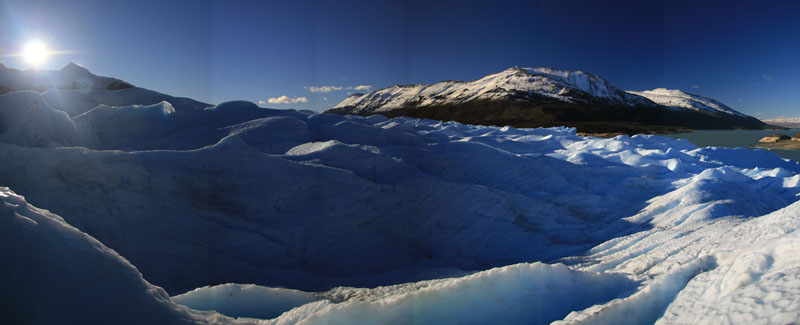Argentina page 7
page 1 | page 2 | page 3 | page 4 | page 5 | page 6 | page 7 | page 8 | page 9 | page 10
Returning the next day also meant slightly better light... so, another panoramic shot to test your internet bandwidth. click the picture!
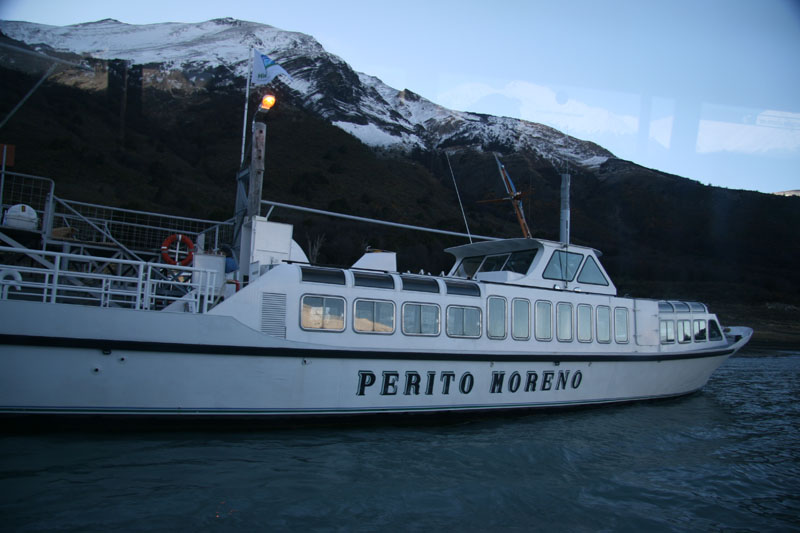
I just don't learn... I mean... "lakes district" = lots of lakes, duh. Lots of lakes = boats. Boats = i don't feel too well
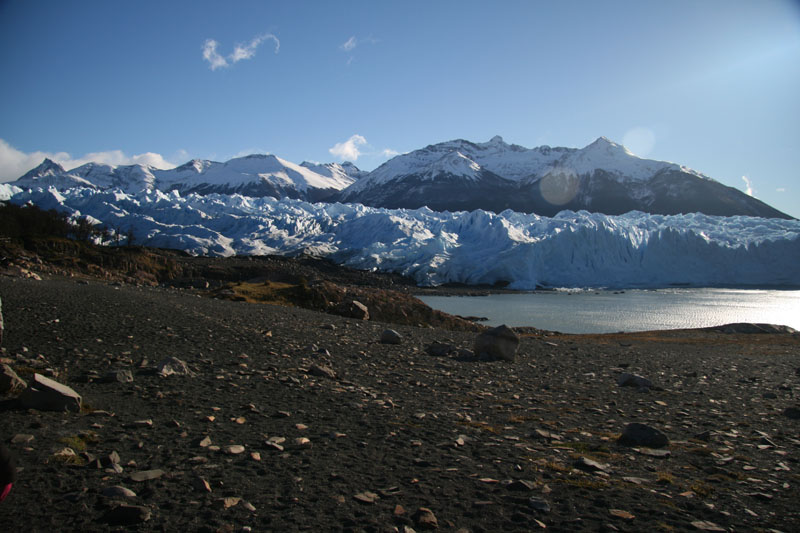
Now that's what I'm talking about... a CLOSER look... hmm... I wonder if we can get EVEN closer?
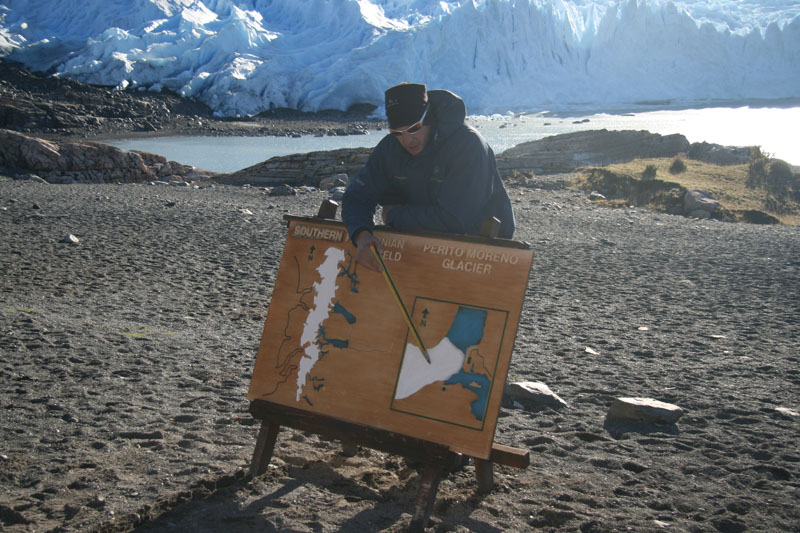
One of the park rangers, with his giant pen,is explaining to us the finer details of the way that climate infulences the movement of glaciers. I'm sure I'll get a more detailed recap of this in my course... (MA in Climate and Society, starting this Sept.)
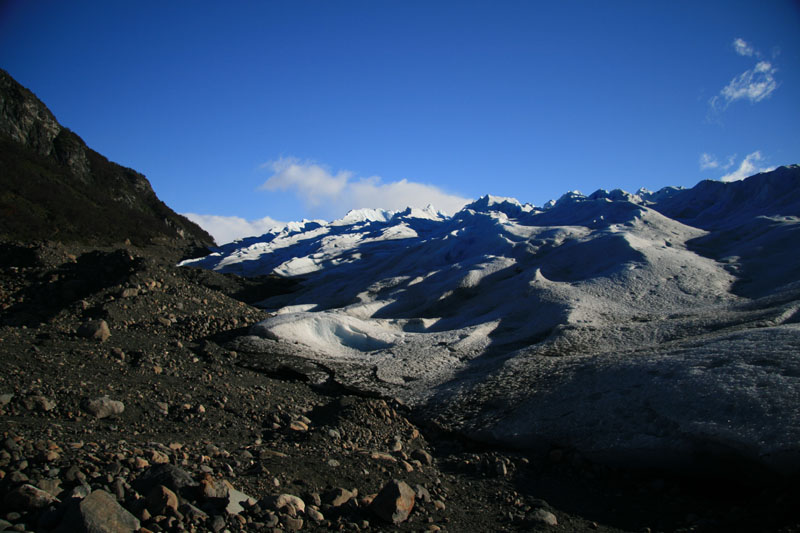
hmm... this is pretty close. This ice looks a bit slippery though
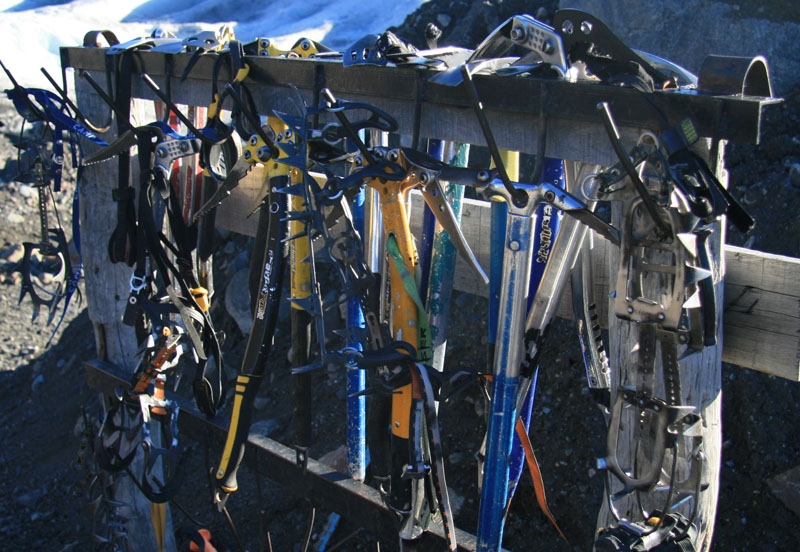
The tools of the trade... ice axes and crampons. (does anyone know where the name "crampons" comes from?)
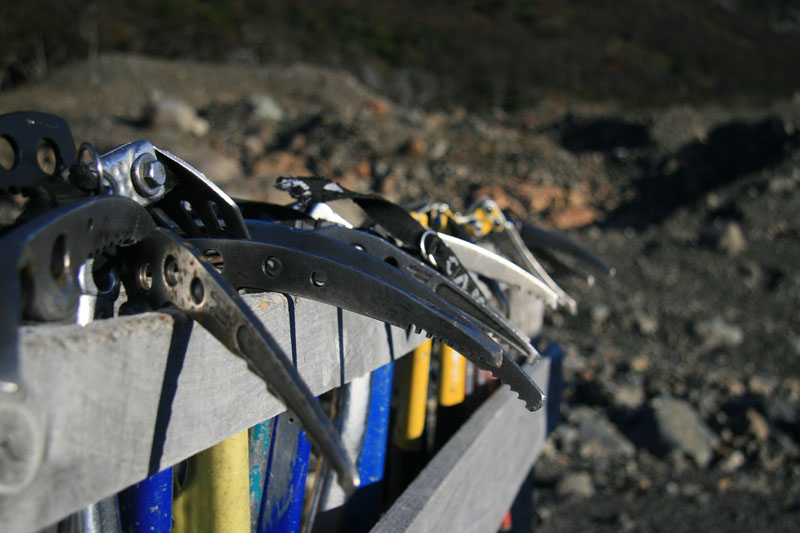
Lets see if we can find me a sharp ice axe...
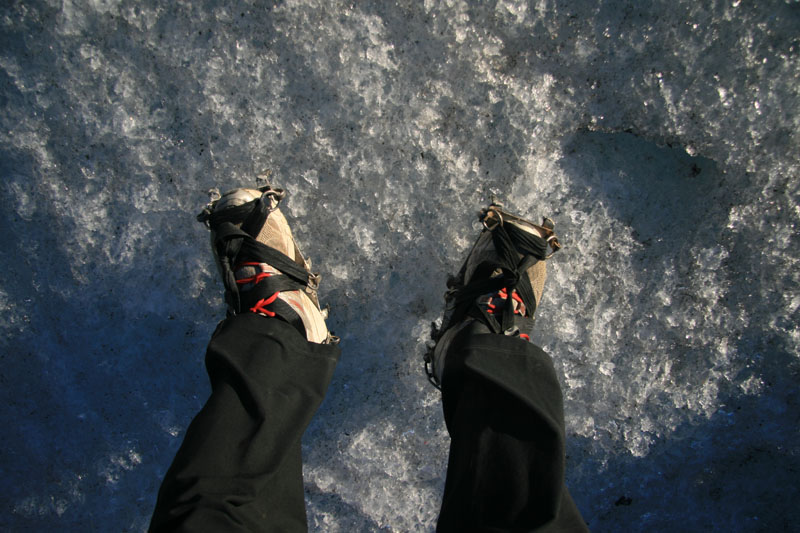
despite wearing totally inappropriate footwear, they hooked me up with a really old pair of crampons, which are basically old-school roller skates but without the wheels. They weigh about the same too...
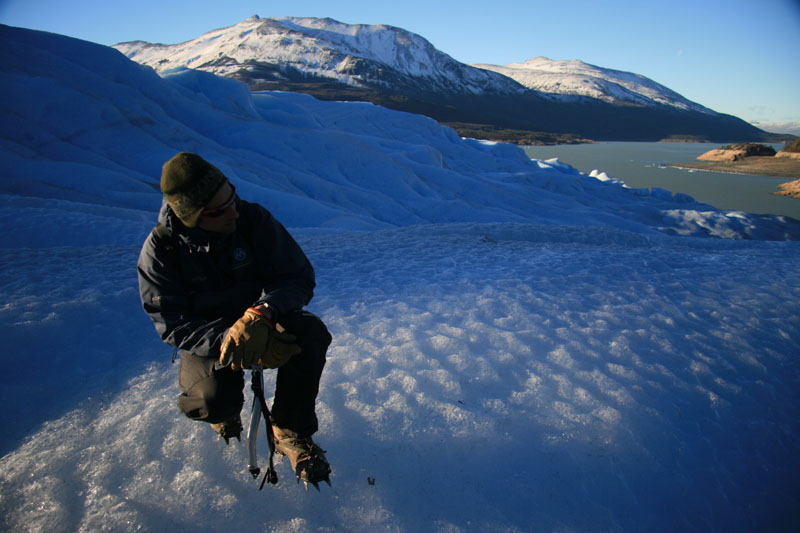
My guide starts explaining to us the ins and outs of ice trekking and how to use our crampons and ice axes effectively
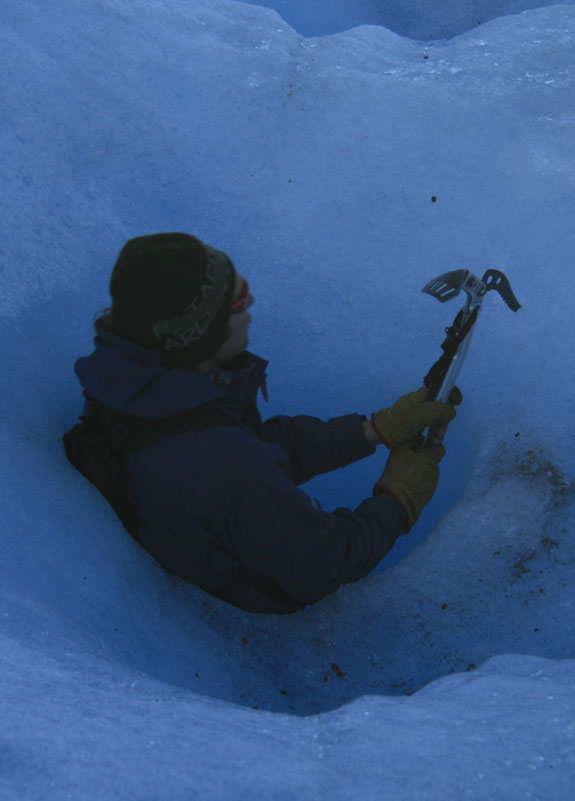
He also explains to us how to get yourself out of a hole...
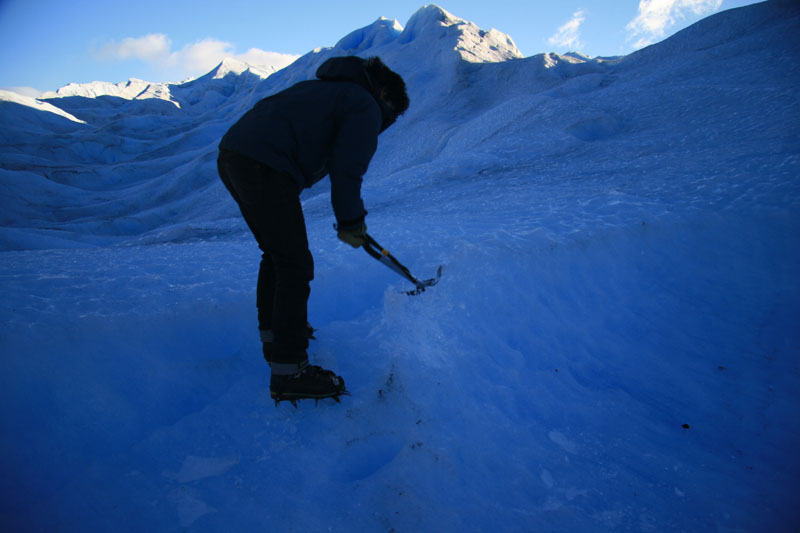
The guides went ahead... and occasionally cut some steps out of the ice for us. I think they were just looking for something to do with the ice axes... we didn't really need them on this terrain.
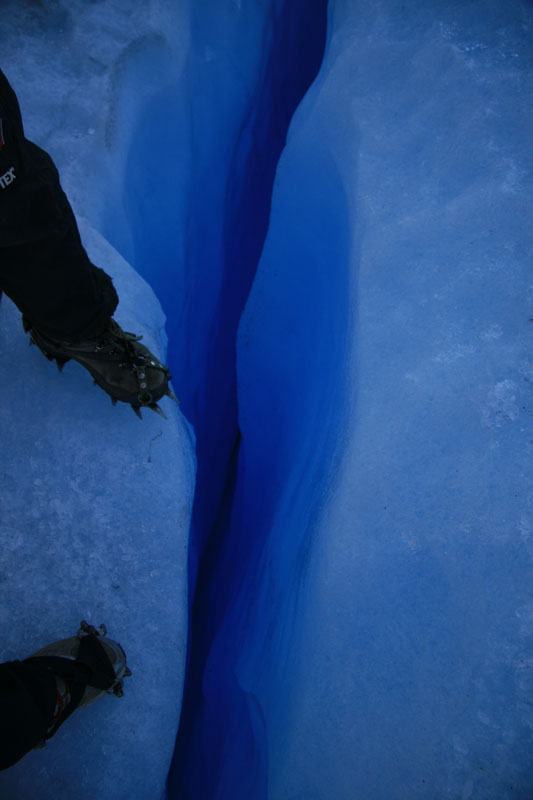
ok Daniel, try not to fall in this... otherwise you will actually need to use your ice axe...
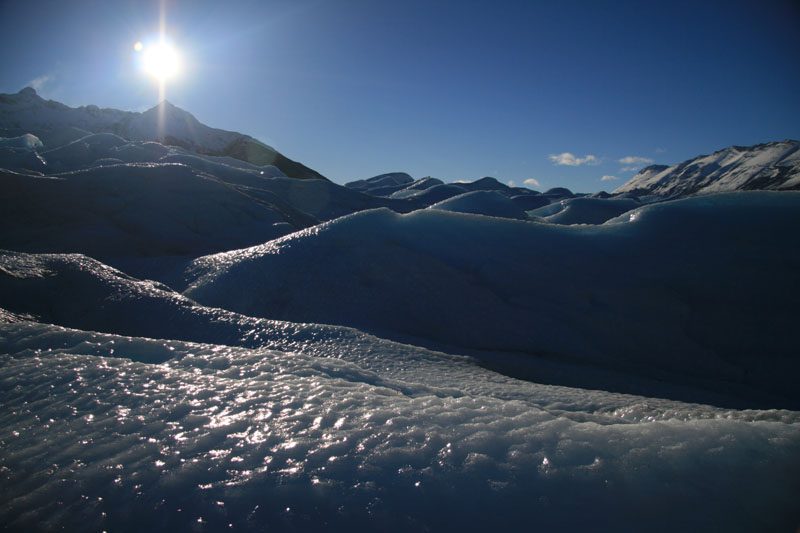
The terrain on the top of the glacier is much smoother than it looks from a distance... and you can't feel it move. Even though it moves as much as 10m a day in winter.
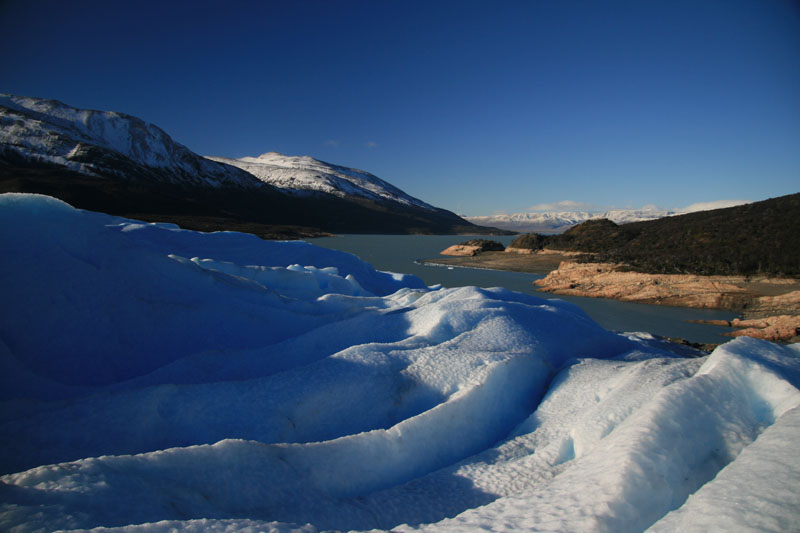
The view over the glacier into Lago Argentino was quite spectacular... almost as spectacular as the view over Lago Argentino onto the glacier...
yet another panoramic shot... I should try printing this one, I stitched together six portrait-orientation shots for this, rather than my usual stitching of 4-5 landscape-orientation shots. The original (which isn't on the website, its too big) is a huge 6763x2751 pixels. click the picture!
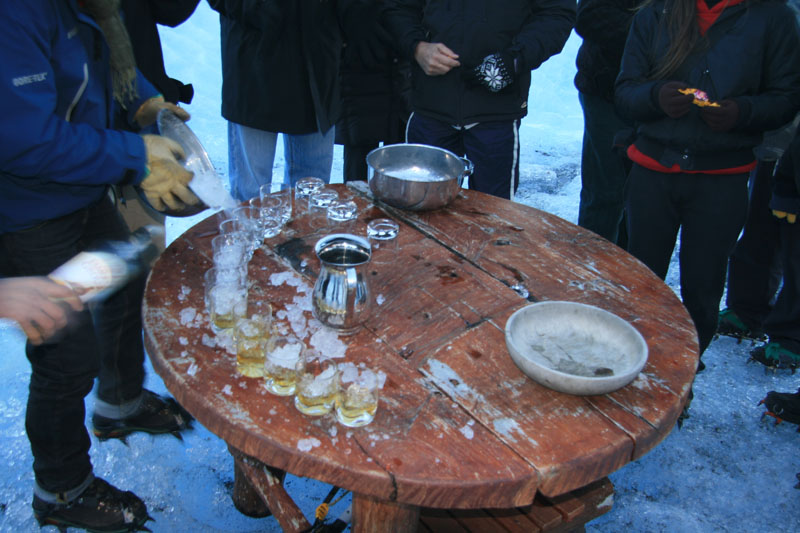
At the end of our little trek, we had some whiskey... there was no shortage of ice
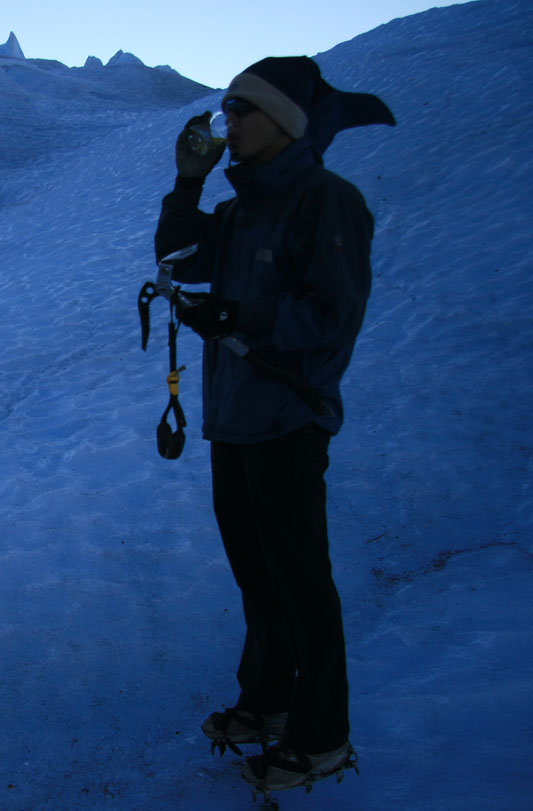
Just chillin' with my glass and my axe... which didn't get any real use... oh well, that's probably a good thing.
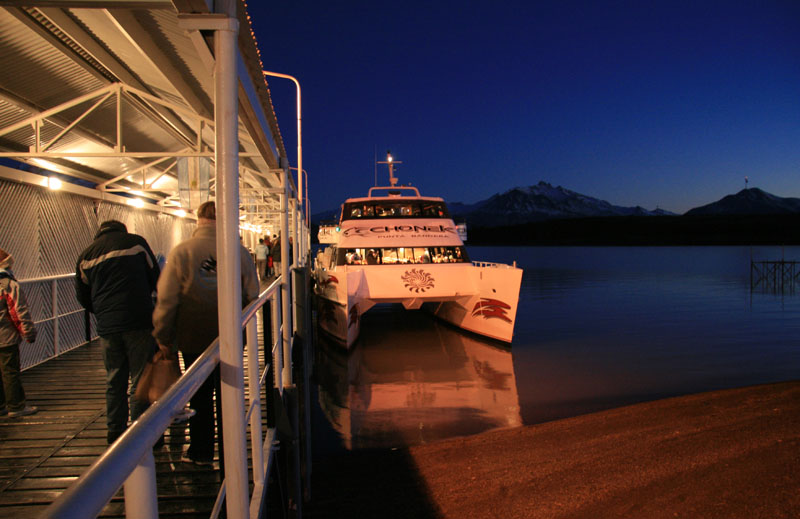
The next day, I went to have a look at some other glaciers... unfortunately, these were only accessible by boat. Such has been my luck of late. At least this boat looks pretty big... lets hope the waves aren't too big.
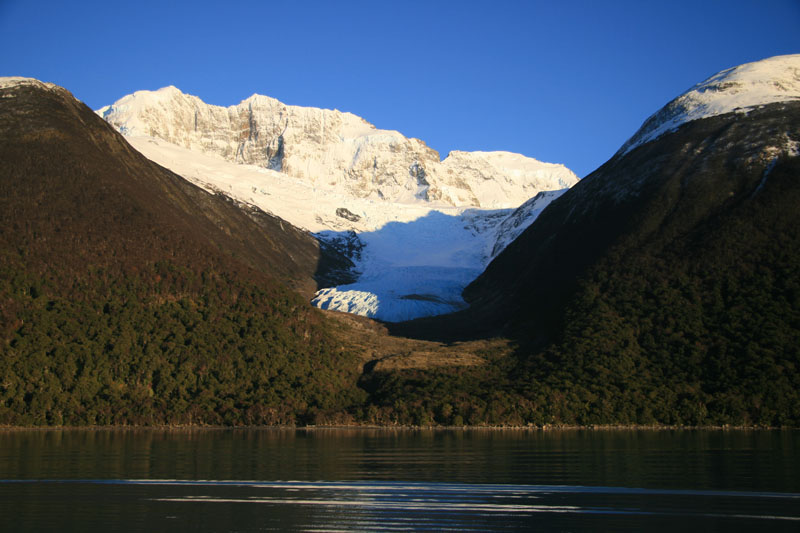
As you can see, not all glaciers flow into the sea. These are called "hanging" glaciers because of the way that bits of ice break off and leave the end of the glacier "hanging", so to speak.
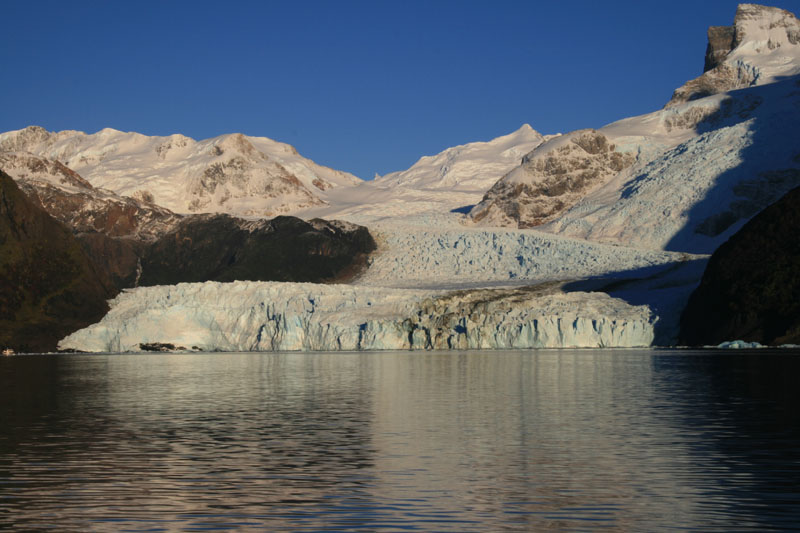
This glacier, the Spagazzini (I think) was named after an Italian guy who was one of the first people to come up with the theory of how glaciers are formed and how they move. I learned today that the Perito Moreno glacier is a bit of a curiosity among glaciers because it is one of the small handful of glaciers in the world which is actually advancing. You see, because of global warming, almost all the glaciers in the world have been retreating - that is to say that they are losing ice faster than they are able to replenish it. Many things affect the rate at which glaciers advance or retreat, the length and temperature of summers, the length and temperature of winters, the amount of precipitation that the regions which supply the glaciers receive, etc. This makes glaciers very good indicators of long-term trends in climate... which is why many people are alarmed that almost all the glaciers in the world are retreating, and at a very fast rate.
page 1 | page 2 | page 3 | page 4 | page 5 | page 6 | page 7 | page 8 | page 9 | page 10

